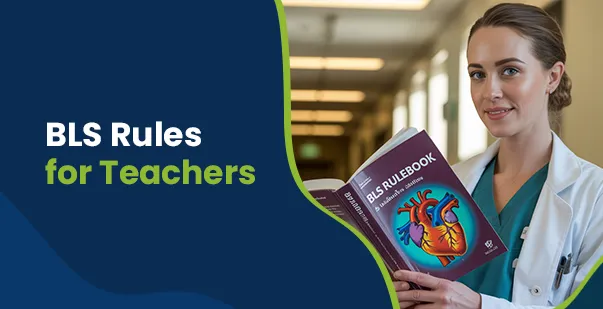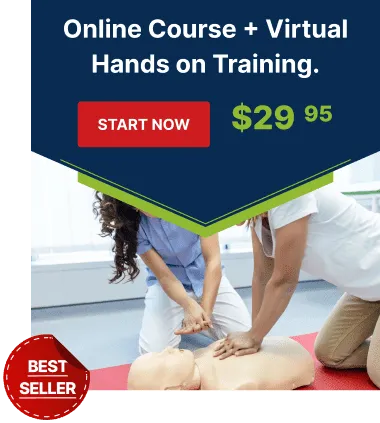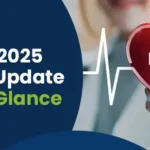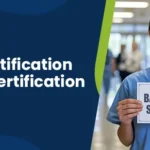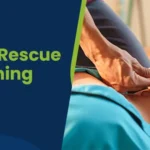Table of Contents
- Introduction
- Why Is BLS Required for School Teachers?
- What Does BLS Certification Cover?
- Do State Laws Require Teachers to be BLS Certified?
- How to Get BLS Certified as a Teacher?
- How Often Should BLS Be Renewed?
- What are the Benefits of BLS Certification for Teachers?
- Enroll in BLS Certification Now!
You are teaching in a classroom of 30 students when one of them suddenly collapses. So, what would you do in such an emergency? Teachers today should not be just educators because, in many situations, they may also be the first responders. This is where Basic Life Support (BLS) certification becomes important for these professionals.
A BLS certification for teachers is a course that provides life-saving skills like cardiopulmonary resuscitation (CPR) and the use of automated external defibrillators (AEDs). According to the American Heart Association, over 23,000 children in the United States experience cardiac arrest. A BLS-certified teacher can easily step in during such emergencies and provide anyone with critical support. Many schools specifically encourage it but some states in the United States have also made BLS certification mandatory for teachers. So, read on to learn more about this certification and how requirements for teachers vary by state.
Why Is BLS Required for School Teachers?
BLS certification is increasingly becoming a recommended safety requirement for school teachers. It provides you with the skills to respond effectively to on-campus medical emergencies. There are various other reasons to get a BLS certification online, such as:
Be the First Responder in a School Setting
In most school environments, especially elementary and high schools, teachers are the adults closest to children when a medical emergency occurs. While school nurses and emergency teams can assist, the teacher is often the first one on the scene. Having BLS certification ensures they are not only mentally prepared but also technically capable of managing such incidents.
Legal Protection and Liability Readiness
Many districts include BLS certification under their legal and administrative training requirements. If a teacher is BLS certified, they are often covered under Good Samaritan laws while performing emergency aid. Not having this training may also expose teachers and schools to legal consequences if negligence is found in emergencies.
Enhances Overall School Safety Culture
BLS-certified teachers contribute to a safer school environment. Their presence reduces response time during on-campus emergencies. They also support the school nurse and safety team. They also set an example for peers and students about the importance of first aid and emergency preparedness. Many schools with trained staff also qualify for lower liability insurance premiums and are better positioned during audits or safety reviews.
Required or Recommended by State and Local Policies
Many U.S. states recommend or require CPR/BLS training for public school teachers (especially health or PE teachers), coaches, bus drivers, cafeteria staff, school administrators, and counselors. However, it is not federally mandated.
Texas, California, and Illinois already have policies in place encouraging or requiring CPR training for teacher licensure or employment. Some states even require CPR instruction to be part of the school curriculum, making trained teachers essential to meet that mandate.
Read More: The Ultimate BLS Cheatsheet (+Infographics)
What Does BLS Certification Cover?
BLS training for educators is different across multiple regions in the U.S. However, there are some common topics covered by almost every training provider in the country. These include:
Skills and Techniques Taught in BLS
BLS training provides chest compressions, rescue breathing, AED usage, relieving airway obstruction, and other key skills. The course also emphasizes proper technique, timing, and safety measures to increase the likelihood of survival during any cardiac or respiratory arrest. This applies both to adults and children.
Adult and Pediatric Protocols
BLS certification is as relevant as workplace first aid training and is specific to both adult and pediatric care. For teachers who work with young students or teenagers, understanding the correct response based on age and size is the key to success. The course customizes approaches so that teachers can confidently respond in both scenarios.
CPR and First Aid Basics
Many people confuse BLS with basic cardiopulmonary resuscitation (CPR) or first aid, but there are key differences. Courses covering teacher CPR and BLS requirements often include relevant topics like bandaging wounds or treating minor injuries. Apart from other CPR basics, these skills may be beneficial when attending to serious cardiac or respiratory emergencies.
Do State Laws Require Teachers to Be BLS Certified?
BLS is one of the top certifications that promotes a safer work environment in the United States. Yet, the requirement for this certification type among teachers varies widely. Some states have mandatory policies, while others leave the decision to individual school districts.
Here’s an overview of the requirements of BLS certification for teachers:
States with Mandatory Requirements
Illinois mandates BLS or CPR-AED certification for school employees, including teachers, upon hiring. Similarly, Oregon and New York require CPR/AED and even BLS in some cases, for all school staff.
Often, schools with AED devices on campus must also have a minimum number of certified personnel available.
District-Level Policies in Other States
Even in states without formal legislation, many school boards and private schools require teachers, especially those handling extracurricular activities or physical education, to be BLS certified. In Texas, for example, school districts make their own rules, and many mandate BLS for coaches, Physical Education (PE) instructors, and administrators.
Read More: RQI vs. Conventional BLS Training
How to Get BLS Certified as a Teacher?
School nurses, physical education teachers, and sports coaches are often required to hold BLS certification as part of their job descriptions. They are also more likely to encounter physical injuries or respiratory distress incidents during sports, field trips, and recess.
On that note, here is a list of the detailed steps to get BLS certified as a teacher:
Step 1: Choose an Accredited Course Provider
Start by selecting an authorized or accredited provider in the country. You will get online and in-person formats, based on your state’s rules and acceptance criteria of the school.
Step 2: Complete Online Modules and Practical Sessions
Most BLS courses follow a blended format, an online module followed by an in-person hands-on session. You will also learn how to perform CPR, use an AED, and handle choking or unconsciousness through these modules and practice sessions.
Step 3: Pass the Final Evaluation
You must be able to demonstrate the correct BLS techniques during a practical exam. Sometimes, you may also have to take a written test to showcase your life-saving skills. On successful completion, the certification provider will send you a BLS Provider Card valid for two years.
How Often Should BLS Be Renewed?
If you think that the BLS certification is valid for a lifetime, then you are wrong. In most cases, it is valid only for a specified period and must be renewed on time. The requirements are discussed in detail, as follows:
Timely Renewals
Most BLS certifications last for two years. Renewal courses for BLS are shorter, which you can easily complete. However, you will still need to show that you are updated with all required life-saving skills. So, if you renew the certificate on time, it ensures compliance with school policy and keeps your skills fresh.
Keeping Up With Medical Updates
Medical guidelines in the U.S. change regularly. For example, AHA updates its CPR and emergency care guidelines every five years. Renewing your BLS certification ensures that you are always aligned with the latest best practices, techniques, and protocols.
What are the Benefits of BLS Certification for Teachers?
There are several benefits of a BLS certification. If you are also in the same profession, check out the points below that highlight the primary advantages:
Builds Confidence in Emergency Situations
When emergencies happen, panic is a natural reaction. BLS training replaces panic with preparedness. Teachers with this certification are more likely to respond calmly and effectively, which makes a tremendous difference in life-or-death moments.
Enhances School Safety Standards
Schools with trained teachers often qualify for better insurance rates and safety ratings. More importantly, they are more prepared to protect their students, which adds a layer of security and trust for parents and the community.
Promotes a Culture of Responsibility
When teachers model emergency preparedness, it encourages students and staff to take health and safety seriously. In some schools, students are even encouraged to learn CPR by seeing their teachers take it seriously.
Acts as a Smart Personal Investment
Even in states where it’s not legally required, BLS certification can help teachers stand out during hiring. It adds value to a resume and shows that a teacher is proactive about student safety.
Often Required for Other School Roles
BLS training may also be required for field trips, after-school programs, and summer camps. Being certified now can make it easier to take on such opportunities later. In fact, teachers can also learn about the BLS cheatsheet that is already available for healthcare providers and first responders.
Enroll in BLS Certification Now!
The BLS certification for teachers prepares them to handle all kinds of life-threatening emergencies with competence and calm. State requirements usually vary, but the benefits of BLS certification are universal. It gives you the surety of greater safety for students, stronger professional qualifications for teachers, and a more resilient school environment. Hence, investing in BLS training is an excellent decision that can save lives. If you are a teacher interested in upskilling yourself with the latest life-saving skills, enroll in our BLS certification now!
